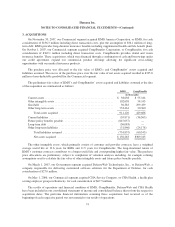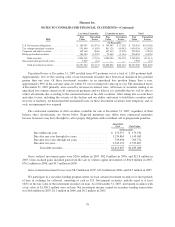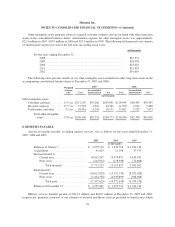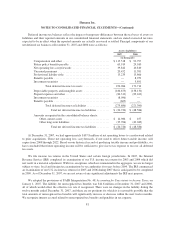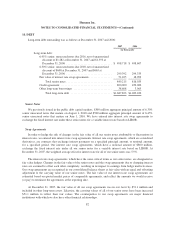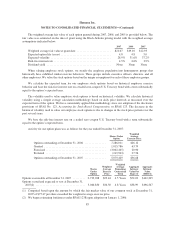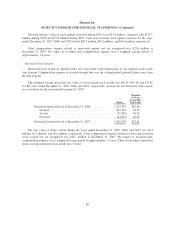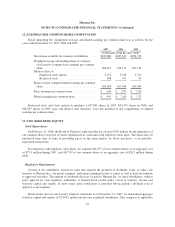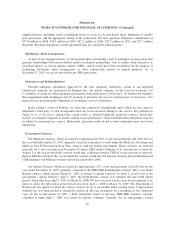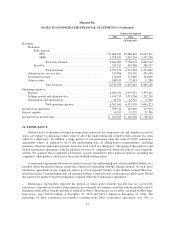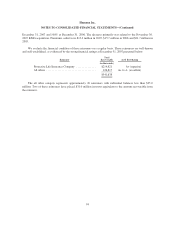Humana 2007 Annual Report Download - page 94
Download and view the complete annual report
Please find page 94 of the 2007 Humana annual report below. You can navigate through the pages in the report by either clicking on the pages listed below, or by using the keyword search tool below to find specific information within the annual report.
Humana Inc.
NOTES TO CONSOLIDATED FINANCIAL STATEMENTS—(Continued)
the Humana common stock fund. However, a participant could reinvest any funds, including the Company match
in the Humana common stock fund, in any other plan investment option at any time. Beginning January 1, 2007,
the Company’s cash match is invested pursuant to the participant’s contribution direction.
Stock-Based Compensation
We have plans under which options to purchase our common stock and restricted stock awards have been
granted to executive officers, directors, key employees and consultants. The terms and vesting schedules for
stock-based awards vary by type of grant. Generally, the awards vest upon time-based conditions. Upon exercise,
stock-based compensation awards are settled with authorized but unissued company stock. The compensation
expense that has been charged against income for these plans was as follows for the years ended December 31,
2007, 2006, and 2005:
2007 2006 2005
(in thousands)
Stock-based compensation expense by type:
Stock options ..................................... $15,408 $ 18,025 $ 24,304
Restricted stock awards ............................. 26,724 14,533 5,849
Total stock-based compensation expense ........... 42,132 32,558 30,153
Tax benefit recognized .......................... (15,732) (12,028) (11,337)
Stock-based compensation expense, net of tax . . . $ 26,400 $ 20,530 $ 18,816
Since 2006, a greater proportion of the awards granted to employees, excluding executive officers, were
restricted stock awards as opposed to stock options when compared to grants made in prior years.
The tax benefit recognized in our consolidated financial statements is based on the amount of compensation
expense recorded for book purposes. The actual tax benefit realized in our tax return is based on the intrinsic
value, or the excess of the market value over the exercise or purchase price, of stock options exercised and
restricted stock awards vested during the period. The actual tax benefit realized for the deductions taken on our
tax returns from option exercises and restricted stock vesting totaled $48.0 million in 2007, $47.8 million in
2006, and $22.3 million in 2005. There was no capitalized stock-based compensation expense.
Beginning April 2006, the stock plans provide that one restricted share is equivalent to 1.7 stock options. At
December 31, 2007, there were 15,774,996 shares reserved for stock award plans, including 9,994,245 shares of
common stock available for future grants assuming all stock options or 5,878,968 shares available for future
grants assuming all restricted shares.
Stock Options
Stock options are granted with an exercise price equal to the average market value of the underlying
common stock on the date of grant. Our stock plans, as approved by the Board of Directors and stockholders,
define average market value as the average of the highest and lowest stock prices reported by the New York
Stock Exchange on a given date. Exercise provisions vary, but most options vest in whole or in part 1 to 3 years
after grant and expire 7 to 10 years after grant. Upon grant, stock options are assigned a fair value based on the
Black-Scholes valuation model. Compensation expense is recognized on a straight-line basis over the total
requisite service period, generally the total vesting period, for the entire award.
84


